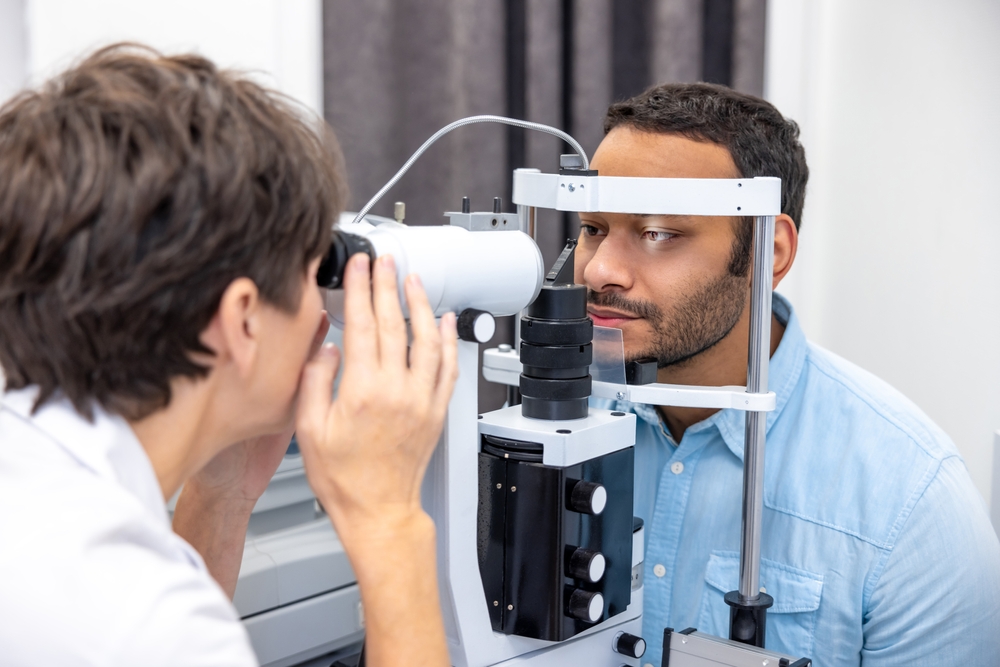
Is your astigmatism causing blurry, unfocused vision? Are you tired of relying on glasses and contacts for clear eyesight?
You may be a good candidate for LASIK. This popular vision correction procedure has helped millions of patients achieve visual freedom and enjoy crisper, clearer vision.
Keep reading to learn more about whether LASIK can correct astigmatism and whether the procedure is right for you.
What is Astigmatism?

Typically, your eye is shaped like a sphere. However, if you have astigmatism, it has more of an oval shape.
This causes incoming light to bend irregularly onto the retina, which results in blurry vision. Astigmatism is a common refractive error, along with nearsightedness and farsightedness, which both also cause blurry, unfocused vision.
If you’ve noticed changes or issues with your vision, it’s essential to book an eye exam with your ophthalmologist at Hayden Vision. Your ophthalmologist can check your eyes to ensure they are healthy and find the right prescription or treatment for you so you can see clearly.
What is LASIK?
LASIK is an eye surgery that uses specialized lasers to correct nearsightedness, farsightedness, and astigmatism. It involves carefully reshaping the cornea so that light hits the retina at the best spot for clear vision.
This procedure is quick, easy, and minimally invasive, with most patients returning to normal activities after just one day of healing. The majority of LASIK patients no longer require glasses or contacts for clear vision and have enjoyed high-definition eyesight for decades.
Am I a Good Candidate for LASIK if I Have Astigmatism?

Each person’s vision and eye health is unique, so the best way to know if LASIK is right for you is to book a consultation with Hayden Vision. When determining if someone is a good candidate for LASIK to correct astigmatism, your ophthalmologist will first measure your astigmatism using a phoropter.
To be eligible for LASIK, you must have no more than 6 diopters of astigmatism. The level of nearsightedness or farsightedness you are at can also impact your eligibility.
You also can’t have more than -12 diopters if you’re nearsighted or +6 diopters if you are farsighted if you want to undergo LASIK. Along with your refractive errors falling within these parameters, you’ll need to meet other requirements to be considered a good candidate for LASIK, including:
- Being 18 or older
- Having had stable vision for at least one year
- Not being pregnant or nursing
- Not having autoimmune conditions like rheumatoid arthritis, lupus, or Sjogren’s syndrome
- Having healthy eyes
- Having thick enough corneas
- Having realistic expectations about the results of LASIK
Your ophthalmologist at Hayden Vision will consider all of these factors, along with your lifestyle and vision goals, to determine if you’re a good candidate for LASIK. If you’re not a good candidate for LASIK, they may recommend other vision correction procedures like EVO ICL or PRK.
Is LASIK Safe?
Your ophthalmologist will begin the LASIK procedure by numbing your eyes with anesthetic drops. You’ll be awake for the procedure but may receive medication to help you relax.
Your ophthalmologist will use a suction ring to ensure your eye stays open during the treatment. It’s also important to note that the laser measures your eye position, so you won’t have to worry about keeping them still, as the laser will stop if your eye moves out of place.
How Does LASIK Correct Astigmatism?
Once your eyes have been numbed, your LASIK surgeon will make a small flap in the cornea using a femtosecond laser. Then, they will fold the flap back and use an excimer laser to reshape the tissue underneath.
This corrects astigmatism by ensuring light hits the retina where it should. Your LASIK surgeon will place the flap back over your eye, which will aid in the healing process, much like a bandage.
Benefits of LASIK for Patients with Astigmatism

Astigmatism causes blurry vision, impacting your quality of life and forcing you to deal with the hassles of visual aids like glasses and contacts. With LASIK, you can correct astigmatism and other refractive errors like nearsightedness and farsightedness in one simple procedure.
After LASIK, most patients don’t need glasses or contacts anymore. Think about all the things that would be easier without the frustrations of visual aids!
You’ll no longer need to constantly push your frames up on your face throughout the day or worry about whether you have enough daily contact lenses to last the week. With improved visual clarity from LASIK, you can also enjoy all of life’s best moments in high-definition.
Whether you’re admiring the vibrant colors of a sunset, showing off your visual acuity during a game of darts, or taking in the sights of a new country, you can trust your clear vision will be there for you 24/7. Although most patients enjoy this clarity for decades, it’s important to note that your vision still has the potential to change due to other unrelated conditions like presbyopia, cataracts, or glaucoma.
Are you wondering if LASIK is the right procedure for you? Schedule an appointment with Hayden Vision in Evansville, IN, today!
